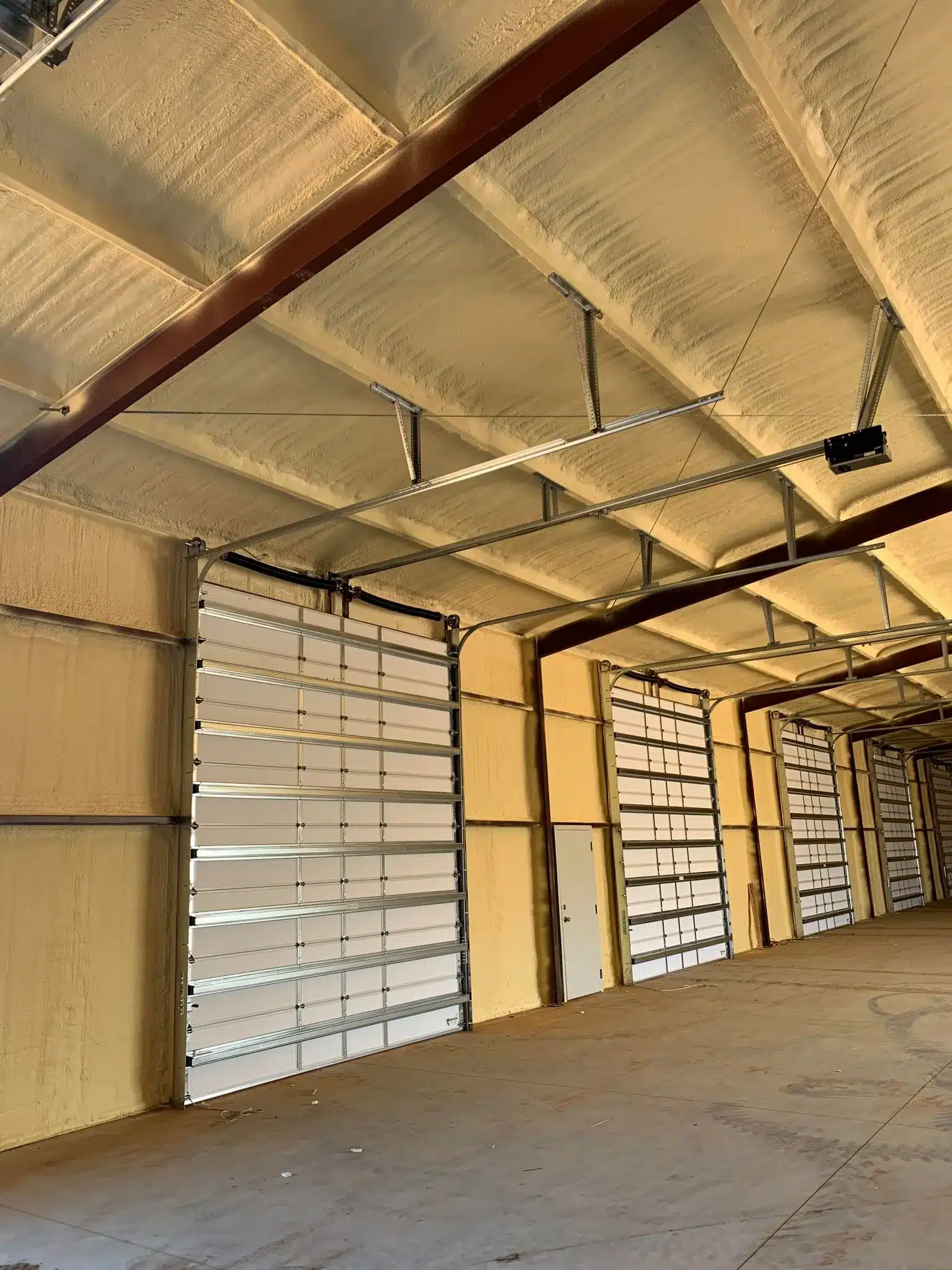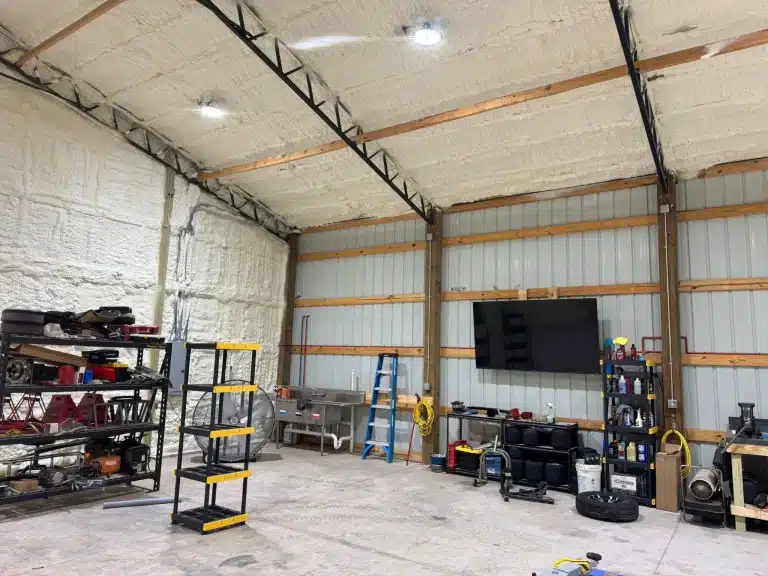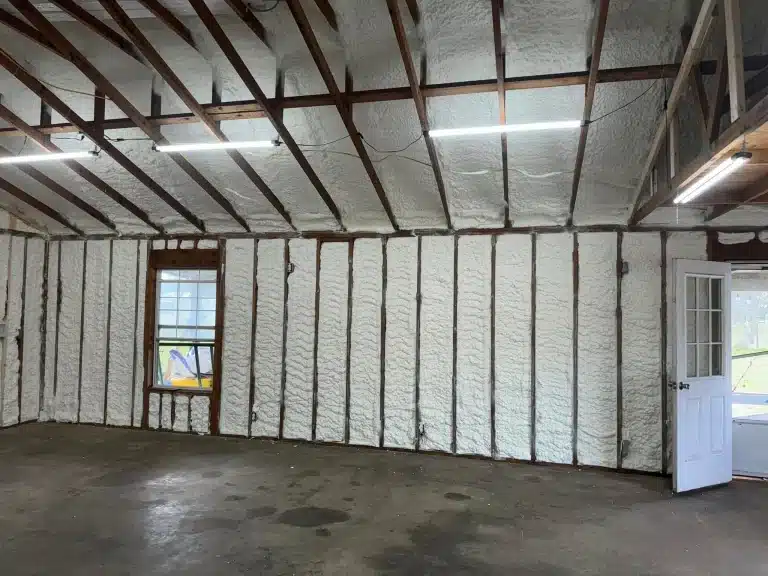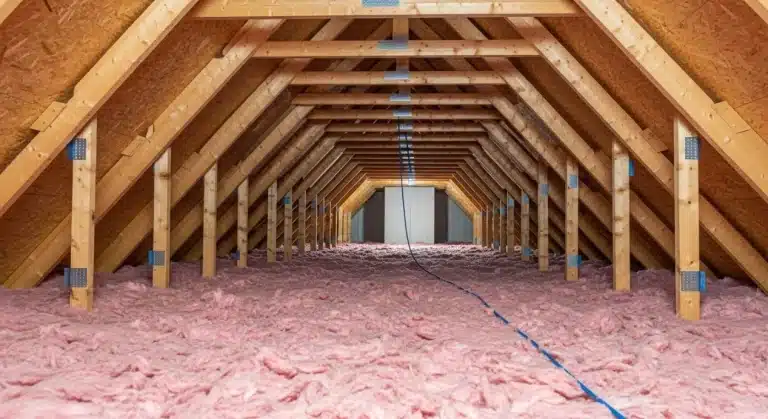Rising energy bills hit hard these days, whether you own a cozy family home or manage a bustling office space. You turn up the heat in winter, only to watch the warmth escape through thin walls, or crank the AC in summer with little relief from the heat. For businesses, that translates to higher operational costs and uncomfortable workspaces that affect productivity. Insulation solutions address these exact issues by creating a barrier that keeps temperatures stable, reduces energy use, and improves overall comfort.
At its heart, insulation involves materials that slow down heat transfer in buildings. Think of it as a shield against the outside weather, helping your property stay cool in summer and warm in winter without overworking your HVAC system. To help you navigate these benefits, this guide draws from years of practical work in the field, covering everything from basic concepts to cutting-edge options. You will find reliable ways to boost efficiency for both homes and businesses, backed by real data and examples.
Here’s what lies ahead. First, we break down what insulation really does and why it pays off. Then, explore the main types of materials, their strengths, and where they fit best. Next, look at key spots in your property to insulate, with tips tailored to residential and commercial needs. We walk through the installation steps, tackle common hurdles, and show how to measure results. Finally, peek at future trends that could shape your next upgrade. By the end, you will have a solid plan to make your space more efficient and cost-effective.
Understanding Insulation and Its Role in Property Efficiency
Insulation works by trapping air pockets that resist heat flow. Heat naturally moves from warm areas to cooler ones, so without proper barriers, your heated home loses warmth to the cold outdoors, or your air-conditioned office lets in summer heat. Materials like foam or fibers create resistance, measured in R-value, which indicates how well they block heat. Higher R-value means better performance.
For homes, good insulation keeps living spaces comfortable year-round. Families save on utility bills and enjoy quieter rooms, as insulation also dampens outside noise. Businesses benefit too. Offices with steady temperatures help employees focus better, and warehouses stay protected from extreme weather, cutting repair costs. A report from the U.S. Department of Energy highlights that proper insulation can lower heating and cooling expenses by up to 50% in some cases.
Building on these savings, energy efficiency supports broader goals like reducing your carbon footprint through lower emissions from power plants. In commercial settings, efficient buildings often earn green certifications that attract tenants or reduce insurance rates. For example, a small retail shop saw high bills drop after insulation upgrades, keeping stock safe in winter while maintaining an inviting space for steady sales.
Market data backs this up. According to the Insulation Institute, the U.S. insulation market reached about $14 billion in 2022, driven by demands for energy savings amid rising fuel prices. For businesses, the payback period on insulation investments often falls under three years, making it a smart financial move.
You might wonder how this applies to your situation. Residential properties focus on comfort and affordability, while commercial ones prioritize scale and durability. Either way, starting with an energy audit reveals weak spots, setting the stage for targeted improvements.
Types of Insulation Materials and Their Applications
Choosing the right insulation starts with understanding available options. Each material suits different spaces based on cost, ease of installation, and performance. Let’s examine the most common ones, with a focus on homes and businesses.
Fiberglass insulation comes in batts or rolls, made from spun glass fibers. It’s affordable and widely available at hardware stores. You can install it yourself in attics or walls, though it requires care to avoid irritation from loose fibers. In homes, it works well for standard framing, providing R-values around 3 to 4 per inch. Businesses often use it in drop ceilings for quick office retrofits.
Cellulose, derived from recycled paper, blows into attics or walls via machines. Treated for fire and pest resistance, it settles densely for fewer gaps. Homeowners like its eco-friendly angle, and it achieves higher R-values, up to 3.7 per inch. For commercial buildings with irregular shapes, like older warehouses, cellulose fills voids effectively.
Spray foam expands on contact, sealing cracks tightly. Closed-cell versions offer high R-value (about 6 per inch) and add structural strength, ideal for basements or roofs. Open-cell foam stays flexible and absorbs sound better, suiting home theaters or noisy commercial lobbies. The downside? Professional installation costs more, but it pays off in air-tight results.
Rigid foam boards, like polystyrene or polyisocyanurate, cut to fit exterior walls or foundations. They resist moisture well, protecting against rot in damp climates. Homes with additions benefit from their versatility, while businesses use them under concrete slabs in new constructions.
Here’s a quick comparison to help you decide:
| Material | R-Value per Inch | Best For | Pros | Cons |
|---|---|---|---|---|
| Fiberglass | 2.9-4.3 | Attics, walls | Low cost, easy to find | Can irritate skin, absorbs moisture |
| Cellulose | 3.1-3.7 | Attics, walls | Eco-friendly, good settling | Needs pro blowing equipment |
| Spray Foam | 3.6-7 | Basements, roofs | Seals air leaks, high performance | Higher upfront cost |
| Rigid Foam | 3.8-6.5 | Exteriors, foundations | Moisture resistant, durable | Requires precise cutting |
This table focuses on core materials, but reflective insulation with foil layers also deserves mention as a complement, especially for larger commercial projects where it reflects heat in sunny areas like factory roofs. Homes in hot climates pair it with these options for added efficiency.
Expert Tip: Match material to your climate. In humid areas, opt for moisture-resistant options like closed-cell foam to prevent mold growth.
Key Areas for Insulation in Properties
Not all parts of your property lose heat equally. Focus on high-impact zones to maximize returns. Attics top the list, as heat rises and escapes through roofs. In homes, add insulation over existing layers if space allows, aiming for R-49 in cold regions. Businesses with flat roofs benefit from similar upgrades, reducing cooling loads in summer.
Walls come next. Exterior walls in frame homes lose about 25% of heat. Cavity insulation fills the space between studs. For businesses, insulated metal panels in new builds offer quick assembly with built-in efficiency.
Floors over unheated spaces, like crawlspaces, need attention too. Raised floors in homes trap cold air below, making rooms chilly. Seal and insulate to stop drafts. Commercial strip malls often overlook slab-on-grade floors, but under-slab insulation prevents heat loss in heated areas.
While focusing on core areas like these, addressing openings like windows and doors is crucial for complete efficiency. Windows and doors account for leaks, though not traditional insulation spots. Weatherstripping and low-E films act as supplements. In offices, large glass facades demand double- or triple-pane upgrades for better thermal breaks.
Ducts in HVAC systems carry conditioned air, but uninsulated ones lose up to 30% efficiency, according to the U.S. Department of Energy. Wrap them with foil-faced fiberglass in attics or basements. Homes and businesses alike see quick wins here, especially in vented areas.
Tailor approaches by property type. Residential setups prioritize family comfort, so focus on bedrooms and living areas. Commercial properties scale up: insulate loading docks in warehouses to maintain interior temps during deliveries.
Expert Tip: Conduct a blower door test early. It pinpoints air leaks before you insulate, saving time and money on fixes.
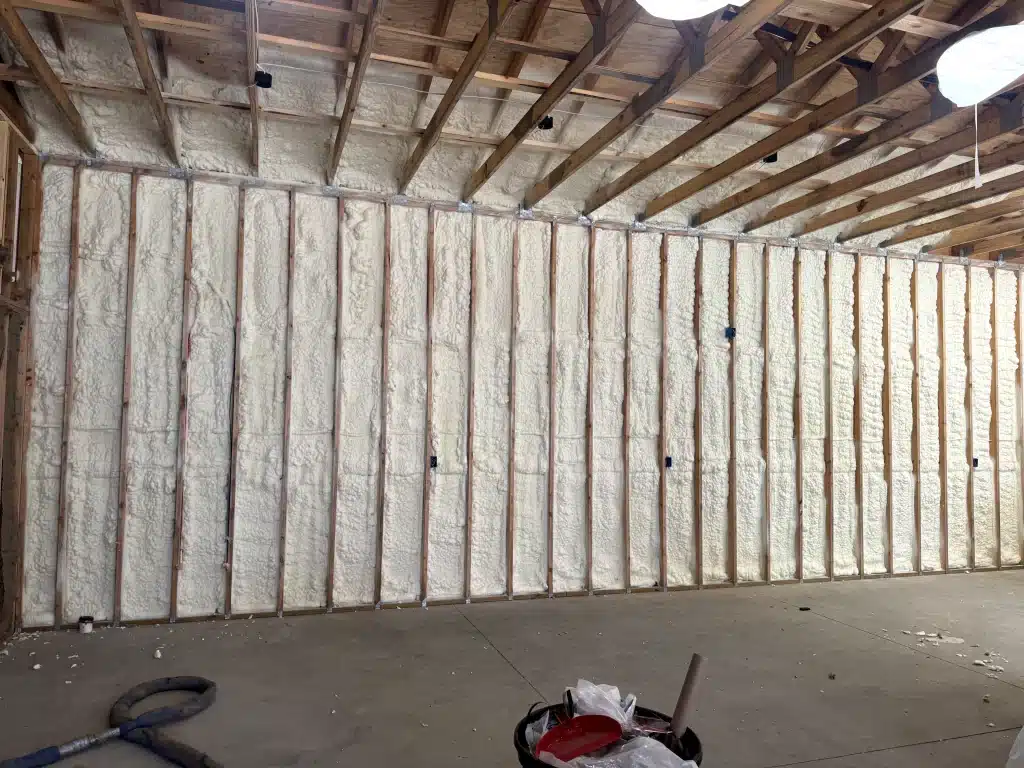
The Installation Process: Step-by-Step Guide
Installing insulation requires planning to avoid mistakes that cut performance. Start with an assessment. Measure areas and check current R-values using tools like infrared cameras. For homes, local building codes dictate minimums; businesses follow stricter commercial standards.
Gather materials based on your plan. Buy enough to cover without gaps, factoring in waste. Safety gear matters: gloves, masks, and goggles protect against fibers or chemicals.
For attics, lay batts perpendicular to joists. In walls, cut pieces to fit snugly without compression, which lowers R-value. Blown-in types need rental machines for even distribution.
Spray foam demands pros due to its chemicals. They use protective suits and ensure ventilation. Rigid boards glue or fasten in place, sealing edges with tape.
Post-install, inspect for coverage. Clean up debris promptly to keep your space safe.
Use this checklist for smooth execution:
| Step | Action Items | Tools Needed |
|---|---|---|
| Assess and Plan | Measure spaces, check codes | Tape measure, energy audit app |
| Prepare Site | Clear area, seal leaks | Plastic sheeting, caulk |
| Install Material | Fit without gaps, avoid compression | Utility knife, stapler |
| Seal and Finish | Tape joints, ventilate if needed | Foil tape, fan |
| Inspect | Verify coverage, test air tightness | Infrared thermometer |
Using the above checklist, adapt approaches for different settings. In commercial settings, coordinate with contractors for phased work to minimize downtime. Homes allow weekend DIY for simple jobs, but hire for complex areas like electrical chases.
Expert Tip: Ventilate attics properly during install. Blocked vents trap moisture, leading to condensation issues down the line.
Benefits of Effective Insulation Solutions
Beyond savings, insulation transforms how properties function. Energy costs drop as systems run less. A study by Oak Ridge National Laboratory found that upgrading attic insulation alone can save homeowners $200-400 yearly on bills.
Comfort levels rise noticeably. Rooms stay even-tempered, eliminating hot spots or drafts. In businesses, this means happier staff and fewer complaints, boosting morale.
In addition to these thermal benefits, insulation offers acoustic advantages through noise control. Insulation absorbs sound, quieting traffic for urban homes or machinery hum in factories. Environmental perks include lower energy demand, aligning with sustainability goals. The global insulation market is projected to grow to $25 billion by 2030.
Health improves too. Better seals keep out pollutants and allergens, especially in tightly insulated homes. For businesses, it maintains air quality in high-traffic areas.
Financially, incentives like tax credits from the Inflation Reduction Act make upgrades accessible. Properties with strong insulation sell faster and at higher prices, as buyers seek efficiency.
Key Takeaways:
- Expect 20-50% reductions in heating and cooling costs with targeted insulation.
- Enjoy year-round comfort and reduced noise as immediate perks for homes and offices.
- Leverage rebates to offset initial expenses, turning investments into quick returns.
Common Challenges and Solutions
Insulation isn’t without hurdles. Start with environmental issues like moisture buildup, which tops concerns as trapped humidity breeds mold. Solution: Use vapor barriers in walls and ensure proper ventilation in attics. In damp commercial basements, choose inorganic materials like foam.
Material-related problems include settling, which happens with loose-fill types over time, creating gaps. Dense-pack cellulose or foam avoids this. For older homes, reinforce joists before adding weight.
Pests represent another practical challenge, as they chew through some materials, like untreated cellulose. Opt for borate-treated versions or metal barriers in vulnerable spots. Businesses in rural areas face rodent issues in walls; regular inspections help.
Financial barriers, such as cost, intimidate many. Break projects into phases, starting with attics for biggest impact. DIY cuts labor fees, but pros ensure code compliance.
Incompatibility arises when retrofitting. Mismatched R-values or poor sealing undo benefits. Always consult audits.
Expert Tip: Monitor humidity post-install with affordable sensors. Levels above 60% signal ventilation tweaks needed.
Measuring the Impact: ROI and Efficiency Metrics
Track success with simple metrics. Pre- and post-install energy bills show direct savings. Calculate ROI by dividing annual savings by upfront costs; most projects recoup in 2-5 years.
Use home energy monitors or commercial software like EnergyCAP to log usage. Blower door tests measure air leakage reduction, targeting under 0.35 air changes per hour in homes.
Infrared imaging spots missed gaps. For businesses, compare utility data quarter-over-quarter. The Department of Energy estimates insulation boosts overall efficiency by 15-25%.
Beyond these immediate metrics, long-term benefits include appraising property value increases. Efficient buildings qualify for lower mortgage rates too.
Emerging Trends and Innovations in Insulation
Technology reshapes insulation. Aerogel blankets offer high R-value in thin layers, perfect for retrofits where space is tight. Homes add them to walls; businesses use in pipe wraps.
Smart insulation integrates sensors for real-time monitoring, alerting to settling or moisture via apps. Eco-materials like mycelium-based foams grow from fungi, reducing carbon footprints.
Phase-change materials absorb and release heat, stabilizing temps in passive designs. Commercial green roofs combine insulation with vegetation for urban cooling.
Nanotechnology enhances fibers for better performance without bulk. Expect wider adoption as costs drop.
Key Takeaways:
- Innovations like aerogels make high-efficiency insulation slimmer and more versatile.
- Smart tech turns passive barriers into active systems for ongoing optimization.
- Green options align efficiency with environmental responsibility.
Putting Your Insulation Solutions Strategy into Action
This guide equips you with the knowledge to enhance property efficiency. Key points include selecting materials that match your needs, targeting high-loss areas, and following solid installation practices. Challenges like moisture have straightforward fixes, and measuring ROI confirms your efforts pay off. Trends point to smarter, greener options ahead.
Use this as your reference. Audit your space, prioritize steps, and track progress. You now hold the tools to create a more efficient, comfortable property that saves money and energy long-term.
Need Expert Guidance?
For personalized advice on insulation projects, reach out to Prestige Insulation Solutions. Our team offers consultations to assess your home or business needs. Contact them at [email protected] or call (850) 429-4969 to discuss options and get a quote tailored to your situation. With their experience, you can move forward confidently toward better efficiency.
Sources
- U.S. Department of Energy – Insulation – Government resource detailing insulation basics, R-values, and energy savings.
- Insulation Institute – Market Report – Industry overview including U.S. market size and growth projections.
- Oak Ridge National Laboratory – Energy Savings Study – Research on attic insulation impacts on household energy use.
Frequently Asked Questions About Insulation Solutions
What R-value do I need for my home or business?
R-value needs vary by climate and building type. In cold zones, aim for R-49 in attics and R-13 in walls for homes. Businesses in similar areas might target R-30 for roofs. Check local codes or use online calculators.
Can I install insulation myself?
Yes, for basic batts in accessible spots like attics. Follow safety guidelines and avoid compressing material. For blown-in or spray foam, hire pros to ensure even coverage and avoid health risks from fumes.
How long does insulation last?
Most types endure 20-50 years with maintenance. Fiberglass lasts indefinitely if dry, but foam can off-gas initially. Regular checks for damage extend life in both homes and commercial settings.
Does insulation help with noise reduction?
Absolutely. Materials like cellulose and open-cell foam absorb sound waves effectively. Homes quiet street noise; businesses muffle HVAC hum. Combine with sealing for best results.
Is insulation worth it in mild climates?
Even in moderate areas, it cuts bills by 10-20% and improves comfort. A report from the Building Science Corporation notes consistent benefits, especially with rising energy prices.
What about insulating existing properties?
Retrofits work well. Start with attics and ducts. For walls, blown-in methods fill cavities without major disruption. Businesses can phase commercial upgrades to fit operations.


